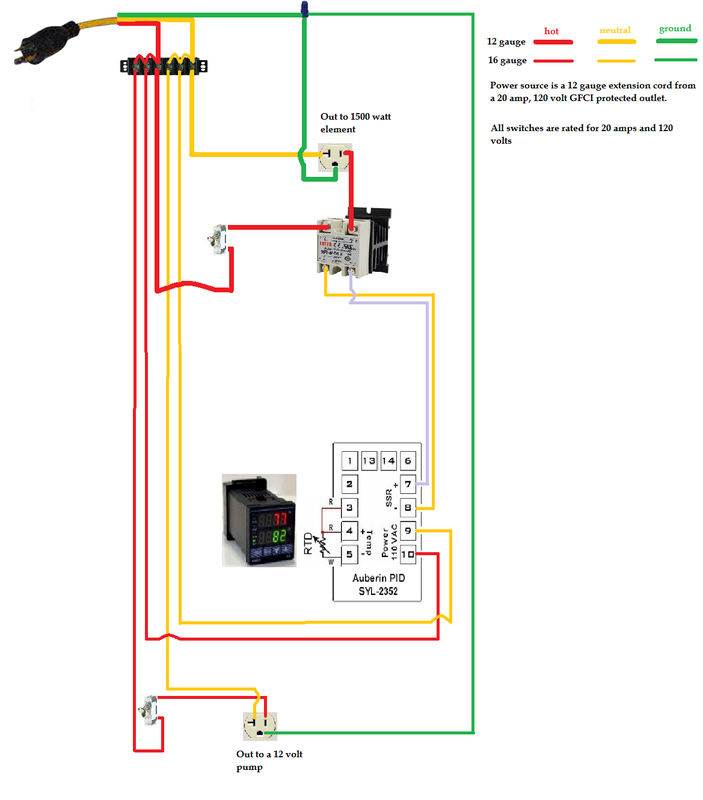While fantasizing about the coming summer weather one thing that I couldn't help but think about was gardening and while thinking about gardening one thing I couldn't help but think about was growing hops. Last summer I planted a Nugget hop rhizome in the backyard mostly because a Midwest Supplies catalog said they grew well in all climates and had a higher Alpha Acid content. I knew nothing about them but decided to go for it because it sounded cool and easy to grow. With a lot of time away from the house leading to poor care and a generally dry summer I finally got some cones growing at the end of the year but the two dozen or so that sprouted never came close to maturity leaving me without any homegrown hops. And without any homegrown Nugget hops I still have not used the hops that I am growing in the backyard. So, long story short I was pondering this over the other day I decided a little research was necessary.
homebrewstuff.com had this to say:
11-16% All Purpose
Strong heavy and herbal, spicy aroma and high bittering value (along with desirable growing traits) has brought this hop variety to the forefront of the industry. Selected from a cross between Brewer's Gold and a high alpha male.
Used For: Extremely bitter. All Ales, Stouts
Subs: Chinook, Galena, Cluster
The beerbecue, which I'm assuming is another homebrew blog out there, went a tad deeper:
These are a common bittering hop, but some use them later in the boil, or for dry hopping, for the flavor and aroma they impart. The flavor and aroma are generally pungent, herbal, and spicy, much like the Columbus hop. Although, Columbus hops have a higher alpha acid content (bringing more bitterness to the beer), and Nugget hops lose less flavor and aroma from their essential oils over time due to their better storage stability.
Their similarity is no surprise, however, as apparently Nugget and Columbus hops share the same mother: Brewers Gold.
And highgravitybrew.com had this telling bit of information:
A high alpha acids hop with a good aroma profile
So basically what I’m getting here is spicy, herbal, pungent and strong. Not really a whole lot of variety from description to description but at least this confirms my belief that they are a good hop to grow with desirably easy traits. So now the question is what should I do with them. Well, I guess the answer is to toss them in an IPA. I think SMaSH brews are a bit boring although they would serve the best vehicle for experimenting with new hops but instead I’m going to shoot for a plain old IPA with some domestic 2-Row, a bit of Munich and a splash of Crystal-20. Hopefully this will be a recipe that will give a bit of backbone to the beer but will not overpower the hop flavor which will be derived from a 60 minute bittering charge and then hopbursting and dry hopping at the end.
Results to come. Anyone have any experience with Nugget hops? Like them? Love them? Hate them?
homebrewstuff.com had this to say:
11-16% All Purpose
Strong heavy and herbal, spicy aroma and high bittering value (along with desirable growing traits) has brought this hop variety to the forefront of the industry. Selected from a cross between Brewer's Gold and a high alpha male.
Used For: Extremely bitter. All Ales, Stouts
Subs: Chinook, Galena, Cluster
The beerbecue, which I'm assuming is another homebrew blog out there, went a tad deeper:
These are a common bittering hop, but some use them later in the boil, or for dry hopping, for the flavor and aroma they impart. The flavor and aroma are generally pungent, herbal, and spicy, much like the Columbus hop. Although, Columbus hops have a higher alpha acid content (bringing more bitterness to the beer), and Nugget hops lose less flavor and aroma from their essential oils over time due to their better storage stability.
Their similarity is no surprise, however, as apparently Nugget and Columbus hops share the same mother: Brewers Gold.
And highgravitybrew.com had this telling bit of information:
A high alpha acids hop with a good aroma profile
So basically what I’m getting here is spicy, herbal, pungent and strong. Not really a whole lot of variety from description to description but at least this confirms my belief that they are a good hop to grow with desirably easy traits. So now the question is what should I do with them. Well, I guess the answer is to toss them in an IPA. I think SMaSH brews are a bit boring although they would serve the best vehicle for experimenting with new hops but instead I’m going to shoot for a plain old IPA with some domestic 2-Row, a bit of Munich and a splash of Crystal-20. Hopefully this will be a recipe that will give a bit of backbone to the beer but will not overpower the hop flavor which will be derived from a 60 minute bittering charge and then hopbursting and dry hopping at the end.
Results to come. Anyone have any experience with Nugget hops? Like them? Love them? Hate them?



 RSS Feed
RSS Feed